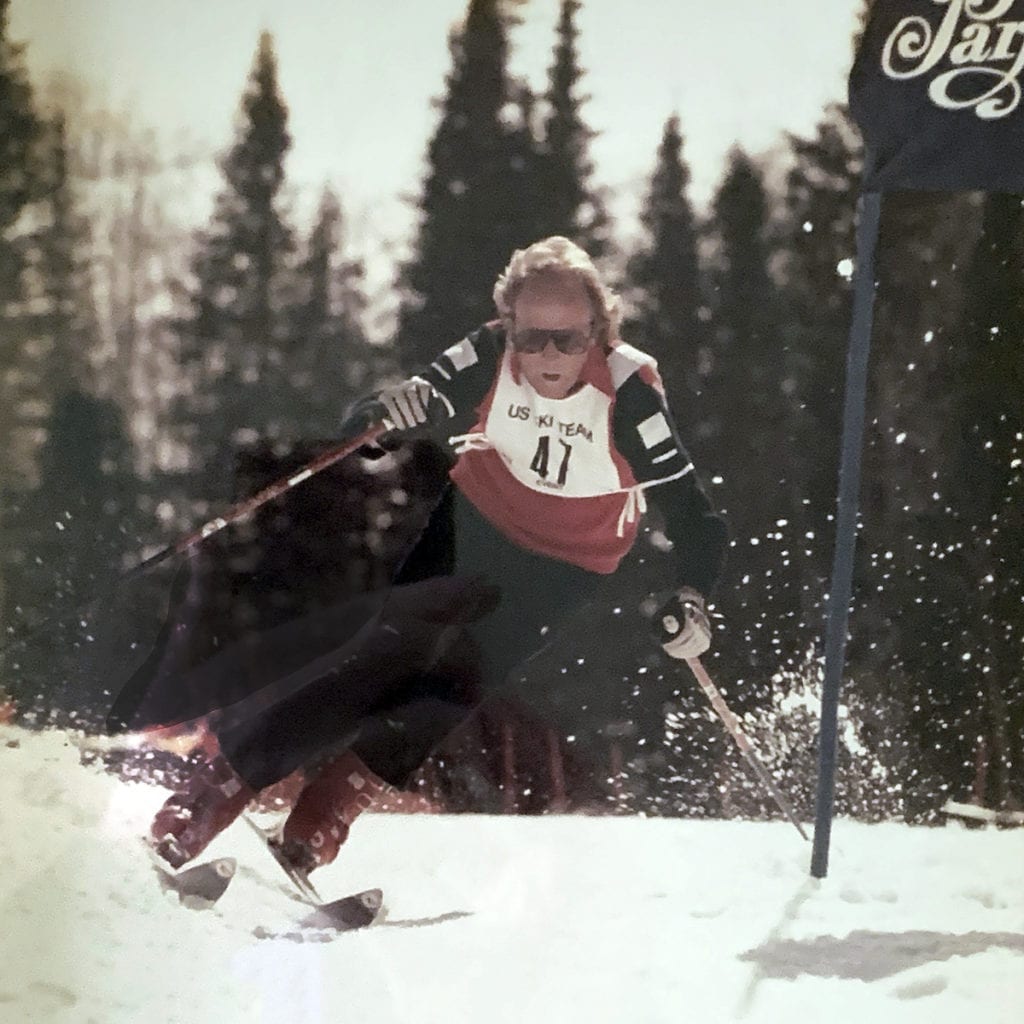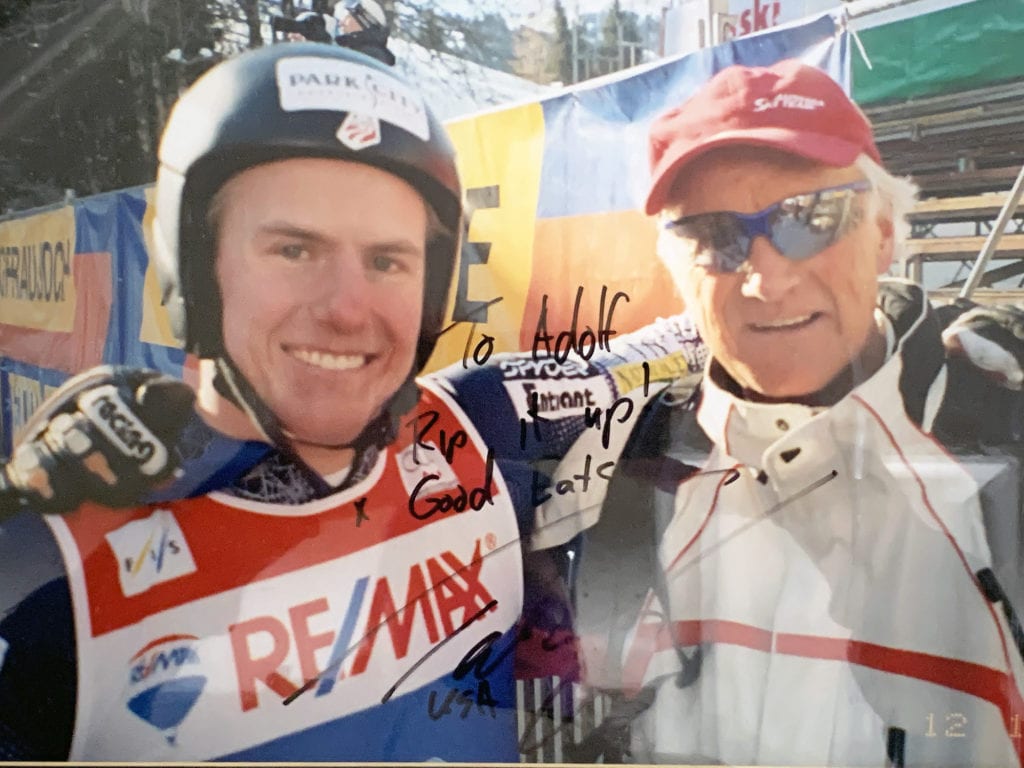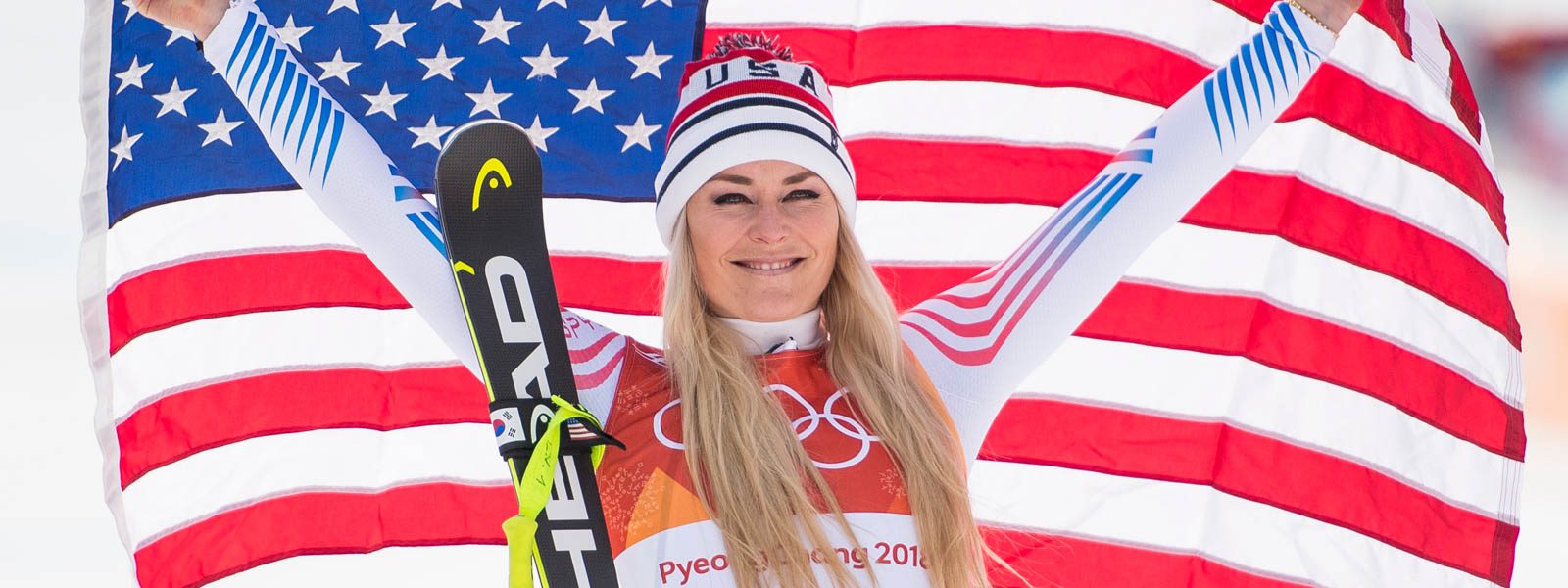After 47 years, Park City’s Adolph’s closes its doors: a look back
It was a busy night at Adolph’s, the legendary gathering place for the ski racing world in Park City. Atomic’s table had grown from six to 20 as revelers came together to toast Daron Rahlves.
“Oh, we are going to have a party tonight,” said Adolph with that trademark pensive look on his staid Swiss face. The veteran restaurateur was nervous as he left the kitchen to rearrange his dining room. But underlying that nervousness was this heartfelt joy of being the centerpiece of ski racing in the world.
Swiss-native Adoph Imboden made the tough decision this month to close the doors after 47 years – the longest-standing fine dining restaurant in Park City. With his lease ending and an extension too complex, the 78-year old chef decided it was time. He’ll slide the last schnitzel onto a plate at the end of April.
No one really knows how many plates of Veal Adolph’s he has served, or how many bottles of Stiegl, or how many gallons of fondue. But the walls of the legendary restaurant – aka ski racing museum – hold an infinite number of stories as the world’s greatest ski racers have, over the decades, raised a schnapps to Adolph, one of the sport’s biggest fans.
While the White Circus has touched hundreds of hotels, restaurants and bars amidst snow-covered alpine peaks, few have preserved such a collection of memories as Adolph’s Restaurant in Park City.
Growing up in the Swiss Alps
Adolph grew up in the heart of ski racing in central Switzerland. From his home in Interlaken, it was just a short train ride up the mountain to Wengen, in the shadow of the Eiger. His uncle Christian took him skiing regularly. As a young teen, he watched the legendary Austrian Toni Sailer win four-straight Lauberhorn downhills in Wengen during the ‘50s.

“I was just totally taken by skiing,” he said, reminiscing this week. His father had instilled a work ethic in him, becoming a chef by trade. He didn’t have the time to become a ski racer himself.
He first came to America in the ‘60s as a 21-year-old, working first at Vermont’s Mt. Snow and eventually finding his way to Vail. He connected with Austrian legend, the late Pepi Gramshammer, and managed the dining room at the Lodge at Vail, meeting great ski racers from Austria, Switzerland and other nations. He was there for the first FIS World Cup in 1967, rubbing shoulders with Serge Lang and Bob Beattie as the White Circus made its debut.
A random tip from a New Orleans guest told him about a job in Park City. “Where’s Park City,” he asked. The tiny mining town had opened a ski area, Treasure Mountains, a few years earlier. He gave it a try, arriving just before Willy Schaeffler’s U.S. Ski Team came to town.
Connecting with the US Ski Team
With a passion for ski racing stemming from his upbringing as a young Swiss, the connectivity to the U.S. Ski Team would set a pathway for Adolph that would live on for a half century.
Adolph’s White Haus began in 1974. At the same time, Schaeffler and the U.S. Ski Team were building a training center in the old Silver King mine buildings near the angle station of the gondola. The mid-70s training center experiment was ill-fated, but the team stayed in town.
Among the byproducts of the era were the renowned World Cup trails of Willy’s Run and the adjacent Erika’s Gold. Adolph established a rapport with the German-born Schaeffler, accompanying him to tag trees as the coach designed the new runs. Along the way, Schaeffler regaled him with stories of the 1960 Olympics in Squaw Valley.
“I was fascinated with everything,” Adolph said. “I couldn’t get enough.”
Adolph’s heyday would begin in 1985 when the World Cup came to town. Initially a March event, the race would later move to November and take on the moniker of America’s Opening. At the time, Adolph’s was a huge restaurant with a tiny kitchen on the public golf course adjoining the resort. It became the unofficial America’s Opening gathering spot.

Resort owner Nick Badami, a staunch supporter of the U.S. Ski Team, made Adolph’s a regular stop. His son Craig, the marketing genius behind the resort and America’s Opening, would hold court with athletes and FIS officials over the race weekend, and wining and dining with his sponsored U.S. Ski Team women’s athletes whenever they came to town. Craig Badami would sadly perish in a helicopter crash at the resort after the November 1989 event.
Marc Girardelli, who won the 1985 World Cup slalom in Park City, and his father Helmut, became regulars. The incomparable Alberto Tomba, who swept a pair of America’s Opening wins in 1991, spread his romantic charm with the staff.

“When he did his Rossignol Tour, Tomba came here every night for schnitzel,” said Adolph. “He wanted me to make a big one – falling off the plate.”
Moving the museum
With a hotel development about to take over his restaurant footprint, Adolph searched for new digs, gravitating to an open restaurant in the same building as the U.S. Ski Team on Kearns Blvd. The restaurant was smaller, but the kitchen was ideal. He ignored the fact that a series of others had failed at the location. He packed up his memorabilia and moved his wall of ski racing memories to the new location in 1997. It has been packed ever since.

Adolph’s role as a melting pot for sport leaders, coaches and some of the world’s greatest names in ski racing grew even bigger. Deals were brokered with sponsors at the Stammtisch. Tales were told over bottles of Stiegl at the bar.
The U.S. Ski Team was a big catalyst for his success. His menus sported the tag line, ‘Official Restaurant of the U.S. Ski Team.’ It was a two-minute walk from the office to the bar, and it became the scene for the team’s holiday party, with drop-in celebrities like Olympic medalists Phil and Steve Mahre. And it became the congregation point for the organization’s board of directors before every annual meeting.
Austrian superstar Hermann Maier won the giant slalom in 1997, just months before his dramatic crash and double gold at the 1998 Olympics in Japan. Maier quickly befriended Adolph, borrowing his BMW (he told Adolph he had the same car back in Austria) for his late night forays.

The Olympics’ gathering spot
During World Cup races and the 2002 Olympics, the restaurant became a blend of cultures, with the prim and proper Swiss sitting next to the boisterous Austrians. “The Swiss would sit at one table in the bar and the Austrians at another,” said Adolph. “The Swiss, they didn’t party like the Austrians. Hermann and the Austrians would just have a great time every night – it was like a party drinking Stiegl, the Austrian beer. The next day he would go out and win a race again. It was just incredible.”
At the 2002 Olympics, the world came to Adolph’s table. From officials of the International Olympic Committee to the International Ski Federation, they dined in style. Every night for three weeks, Adolph and his team flipped 80 seats three times – that’s a lot of veal!
“We served so many celebrities, coaches and the press,” he recalled.
Journalist Peter Kray remembers a media event at Adolph’s midway through the Games. It was a bitter cold evening as thousands of fans crowded around fire pots along Park City’s historic Main Street. A mile away, journalists enjoyed Steak Diane and Swiss wine alongside luminaries like World Champion downhiller Daron Rahlves and Atomic Skis President Michael Schineis.
“We had wonderful courses, lots of red wine,” said Kray. “Most of all, it was the ambience of feeling like we were in the center of the Games – to be in Adolph’s with all the photographic history of alpine racing on the walls.”
Rahlves’ win at St. Anton a year earlier and Bode Miller’s Olympic success in a hair-raising combined a few days earlier were the centerpiece of conversation. It was a trigger for the heyday of Rahlves and Miller that was yet to come.
Taking it on the road
Soon, though, America’s Opening would bid adieu to Park City, with the final race in November 2003. When World Cup abandoned Park City, Adolph would head over to Beaver Creek every December to watch Rahlves, Miller, Steven Nyman, Erik Schlopy and the new kid from town, Ted Ligety.

He had a standing invitation to the team’s summer training camps. And it was a perfect time for Adolph to set aside his passion for road biking, pack up the skis and head to Chile.
In 2003, hometown hero Schopy won bronze in the St. Moritz World Championships. In true fan fashion, Adolph was trackside at the Swiss resort, posing for photos with Schlopy and already planning the party back home. The banner from the celebration at Adolph’s still hangs on the wall.
In 2005, Rahlves won the fabled Lauberhorn downhill just a short train ride from Adolph’s boyhood home. Adolph was there, stoic in his outward appearance but inwardly beaming with pride of his connection with the team.
Rahlves was a regular at Adolph’s whenever he would be in town. Swiss Marco Büchel was another.

“Daron would say, ‘we’ve got to see the Duke,’” said Adolph with a smile. “That means they had a little schnapps and left for a bit – no one knew what they were doing.” You can see the photos with the full-sized John Wayne cutout still hanging on the wall.
While Adolph’s sported a bit more decorum than The Londoner on Hahnenkamm night, you never knew when you might spot a celebrity bartender during big events. Rahlves and AJ Kitt were among a group who looked to instill World Cup legend.

“When you talk about iconic, almost museum-like places in ski racing, Adoph’s is at the top of the list,” said Kitt. “Everybody knew the place. The World Cup who’s who was eating at Adolph’s.”
Kitt remembers hanging out with friends long after restaurant customers had left for the evening, just exchanging stories and feeding off the camaraderie of the sport.
In 1995, the men’s downhill team decided to renew an ages-old tradition of the Rookie Rock. As legend has it, rookies were given the rock by the veterans and asked to carry it around all of the next day wherever they were. There were also Rookie of the Year Awards – not so much for athletic achievement, but for notorious or infamous actions.
“The original rock was still in Europe so we just went outside and took a big rock from Adolph’s landscaping,” recalls Kitt. On it they wrote Daron Rahlves’ name and presented it to him that evening. The next day during a parallel race at Park City, Rahlves dutifully carried the rock around, but left it in the finish area during the race. In his final head-to-head, Casey Puckett had the lead coming to the finish. Daron gave it his all, eventually crashing and sliding directly into the stone – destroying his race skis – and ultimately hoisting the Rookie Rock triumphantly.
Park City’s Nyman had a Boot Hill condo across the street next to the cemetery that became somewhat of a U.S. Ski Team crash pad over the last decade. “Adolph would call me up all the time to come over for dinner,” said Nyman. “He just wanted to catch up on ski racing. I loved going in there and seeing my childhood heroes on the wall. It was a little taste of Europe here in the USA.”
His friend Bob Davis, the FIS rep for masters ski racing, was also a big influence and responsible for getting Nyman’s own memorabilia up on the walls including celebratory banners from his wins on the Saslong in Val Gardena.
One of the big events each year at Adolph’s was Swiss National Day on August 1. It was a big celebration with dining specials and the annual standing shot put. Nyman takes special pride in having his name etched onto the stone after his victory in the mid ‘10s.
In the leadup to the 2010 Olympics at Whistler, Adolph bought Miller dinner one night and told him, “I think you’re going to win some medals in Vancouver.” Miller won gold, silver and bronze.
A lifetime of food and skiing
Adolph spent a lot of time on snow, as a skier and racer himself. He was a regular in town races and it was not unusual to see him making turns with the great Stein Eriksen. At celebratory hometown parades to welcome athletes back to town, Adolph was always there.

It’s hard to imagine doing anything in life for 47 years, much less retaining the passion. As word spread this month, skiers from around the world reached out to pay their own tribute to their friend Adolph. Reservations were brisk as guests looked to squeeze in one more dinner and a conversation with the chef.
As they looked around at the memorabilia, they wondered what would happen to it all. In true Swiss fashion, Adolph has a plan for that with the University of Utah’s ski archives.
But for ski racers around the world, this month has been one of reflection. A time to remember once again, not just the victory but the celebration. And isn’t that what memories are all about?

“I shared many amazing experiences there with my wife, my family, my teammates and friends,” said Rahlves. “The walls spoke of exceptional moments in his life. It was about eating incredible food and toasting to fast skiing.
“But, best of all, it was about sharing it with a proud, dedicated and passionate man: owner, Adolph!”





















